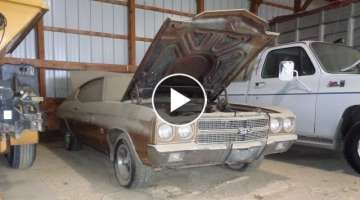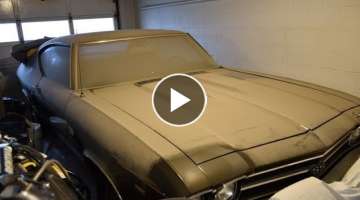1970's Chevy Impala Wagon Discovered 50 Years Underwater!
Noted as one of Chevrolet's most historic vehicles, the Impala has been an American legend for decades. Setting a standard in comfort and value, the Impala seemed to set the bar for the American muscle car. A full-size sedan built by the Chevrolet division of General Motors, the Impala was introduced for the 1958 model year. The Impala was Chevrolet's priciest passenger model through 1965 and became the best-selling full-size vehicle in the U.S. It's main competition was the Ford Galaxie 500 and the Plymouth Fury during a time when full-size models dominated the market. It's success forced Chevrolet to separate it into its own separate model. The Impala underwent many distinct styling phases that included iconic grilles and wild rear ends over its production lifetime.
First used for the full-size 1956 General Motors Motorama show car, the Impala name was used on a car that featured Corvette-like design cues, especially on the grille. With hardtop styling, the car was painted emerald green metallic and had a white interior. This show car is thought to have not survived. A basic packaging and dimension was established by Clare MacKichan's design team along with designers from Pontiac for their shared 1958 GM 'A' body in June. In October, GM Styling vice president Harley Earl caught a glimpse of the first styling sketch that would directly influence the finished Chevrolet product. The basic design came seven months later.
Beginning its life as a high-end Bel Air, the Impala name was derived from the South African antelope. The Bel Air Impala was only available in Sport Coupe or convertible models and was a departure from the standard Chevys of the day with its longer rear deck, shorter greenhouse, and lower setting on an X-type frame. The '58 Chevrolet Bel Air Impala differed structurally from typical Chevrolets of the day. Though the overall length was identical, the wheelbase of the Impala was longer than the lower-priced models. Deeply sculptured rear fenders replaced the sharp tailfins of the 1957 models. Soon becoming an Impala hallmark would be three taillights on each side, while lesser models had two, and wagons had just one. 1958 would bring with it the first dual headlamps to the Impala.
Sponsored
Video
Sponsored
Facebook Comments
Sponsored






























